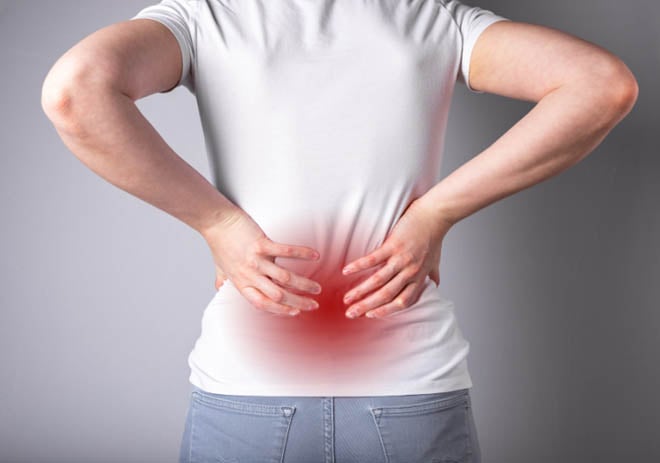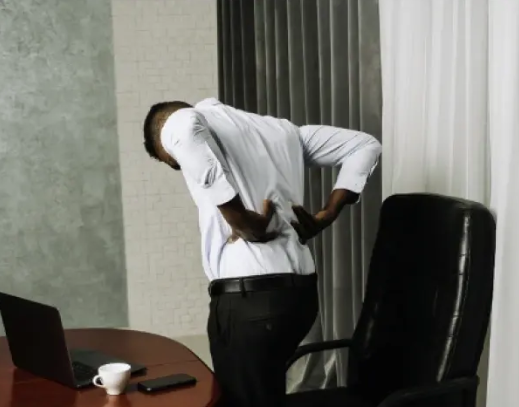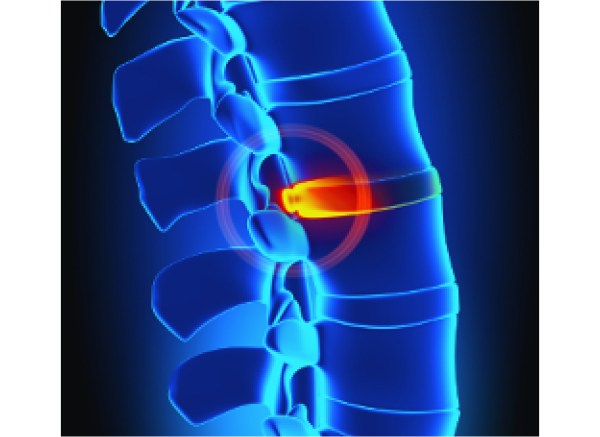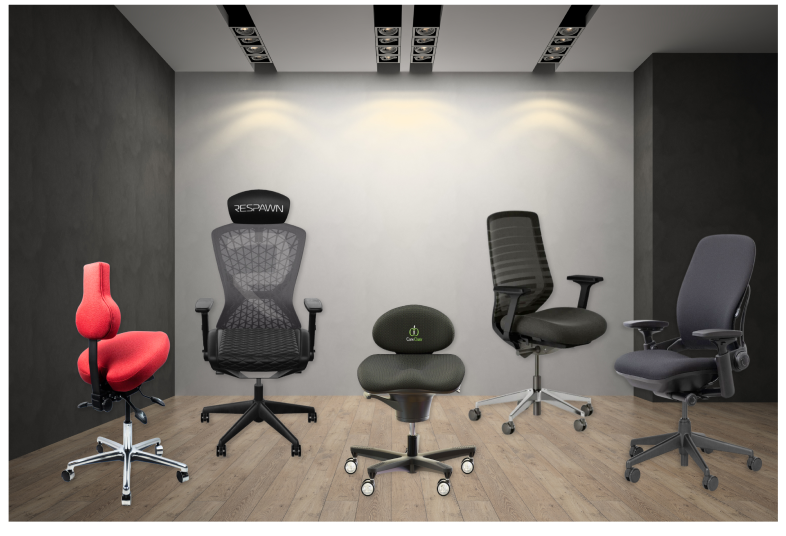Breaking Down Spondylolisthesis
Before we explore the impact of sitting on spondylolisthesis, let’s take a minute to understand it. This painful back condition is where one vertebra slips forward over the one beneath it. This causes the nerves to compress, leading to lower back pain, leg discomfort and muscle tightness. This spinal condition typically occurs in the lumbar region or lower back. The pain from this condition can vary, but unfortunately for some, the pain can be crippling. What can you do if sitting is an essential part of your workday?
The Persistent Challenge of Sitting…and Sitting…and Sitting
In our current work culture, where desk jobs and constant computer usage are the norm, it’s important to ask: Does sitting, especially for a long time, make your spondylolisthesis worse?
The straightforward answer is, yes, absolutely. The way you sit at work can either help or hurt your symptoms. Here's why:
Static Posture: When you hold the same position for too long it can lead to static posture, which places stress on the back, shoulders, arms, and legs. If you’re battling back pain, this will certainly aggravate your condition.
Pressure on the Lumbar Spine: Sitting in a poorly designed chair can put added pressure on the lower spine, risking further damage and increased pain.
Muscle Weakness: Your spine is stabilized by the muscles surrounding it. Sitting for too long can weaken these muscles, potentially harming your spine and increasing discomfort.

So, if you must sit, how can you do it better?
Explore your options. Not all chairs are created equally.
The problem with cheap seating.
Poor Posture and Spondylolisthesis: Sitting for hours in a chair that lacks proper support or adjustability can definitely worsen your condition! These chairs are not meant to support your spine, and they can cause slouching and leaning forward, as you try to get comfortable. This leads to added pressure on your spine and lower back, intensifying spondylolisthesis symptoms.
Pressure Points and Discomfort: Inadequate cushioning also plays a huge role. Lack of support in your chair cushion can create pressure points on your spine and through your seat. If these pressure points don’t find some relief, your body will let you know! A poorly designed cushion can intensify the discomfort associated with spondylolisthesis.
Lack of Pelvis Support: Chairs without proper pelvis support fail to maintain the natural curvature of the spine. This can lead to added stress on the affected vertebrae, potentially worsening your symptoms.
Choosing the Right Chair for Spondylolisthesis
Now that we've seen what to avoid, here's what to look for:
A Well-thought out, Research-Backed Ergonomic Design: Choose an ergonomic office chair designed to support your pelvis. Support at the base of your spine will cause your pelvis to tilt forward, causing your spine to get into a neutral or natural curve. Look for chairs with adjustable lumbar support, seat height, and backrest recline.
Proper Posture: Keep a good sitting posture by keeping your feet flat on the floor, knees at hip level, and back against the chair's backrest. Avoid slouching or leaning forward. A two-part back adjustment is recommended.
Contoured Seat Cushioning: Choose a chair with cushioning designed to distribute your weight evenly and reduce pressure on your lower back.
And REMEMBER! Whenever you must sit for a long time, it’s crucial to incorporate short breaks to stand, stretch, and walk around. These moments of movement can relieve spinal pressure and prevent stiffness.
Good news, Bad News
The challenging reality is that finding a comfortable sitting position with spondylolisthesis can feel daunting. However, you have options. With effort and intentionality, you can get more comfortable while seated. Practicing good posture in a chair that is thoughtfully designed and supports you well can greatly benefit your spinal health and overall quality of life. Your comfort and health are in your hands, and honestly, it all comes down to the chair you’re sitting on.
If you are looking to improve posture and decrease pain while sitting, look no further than Anthros. Anthros is the only chair in the world that is guaranteed to improve posture or your money back. The science-backed, patented design is registered with the FDA as a posture-improving chair and is proven to have the lowest pressure (most comfortable) cushion on the planet (verified by university testing).
Take the next step to reducing pain, increasing comfort, and maximizing performance!
Lower Back Pain-SpondylolisthesisRecent Post

Exercises to Avoid With a Herniated Disc
March 6, 2025A herniated disc can put a serious damper on...

Gentle Back Exercises for Lower Back Pain & Herniated Discs
February 17, 2025Adding a cushion to your office or gaming chair...

Bulging Disc vs. Herniated Disc:
February 5, 2025Adding a cushion to your office or gaming chair...








